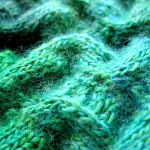
With the weather becoming unpredictable and often chilly this time of year, it is always good to have a family activity for inside on a nasty day. Today, in our second blog about kitchen science experiments, we’ll explore acids.
Every kitchen contains an abundance of both acids and their opposite – bases (aka “alkalis”). The most common acid in the world may be vinegar (which is about 5-7% acetic acid), and it plays a starring role in our first acid and base detector: our sense of taste. When we encounter them in foods, acids taste sour (like vinegar and citrus fruits), while bases tend to taste bitter (this has been tested in labs, but there aren’t many actual foods we eat that are basic enough to notice – maybe because of the bitterness!).
There is a very easy way to see for yourself what foods and drinks are acidic or basic: boil red cabbage in water (carefully, of course) for approximately 10 minutes. By doing this, you can produce a broth full of sensitive pigment (“anthocyanin”) that changes colour based on the acid-base scale, which is called the pH scale. The broth will turn redder when mixed with acidic substances (low pH), and greener for basic ones (high pH). Your juice will keep in the fridge for at least a few days (and freezes fine), but it will be pungent – so don’t make it immediately before a dinner party!

Many fruits, vegetables and condiments are acidic, but a few edible products (egg whites, baking soda and antacid) will turn your cabbage juice green (which is how to make real green eggs with your ham). Try a variety of substances – they work best dissolved in water – and ones that are safe to eat are even better!
If your family likes experimenting with hands-on science, you might also like our day camp programs. During the Christmas holiday break, we have a variety of one-day camps planned for kids who love to play with science – check out our new website – thediscoverycentre.ca – or give us a call at 492-4422 x 221 to find out more and reserve a spot for your kids.
For more great things to discover – visit the Discovery Centre on Barrington Street in Halifax, check out their website or join them on facebook.
Source: http://feedproxy.google.com/~r/hrmparent/CLkz/~3/Hrsq0hUiXBQ/


